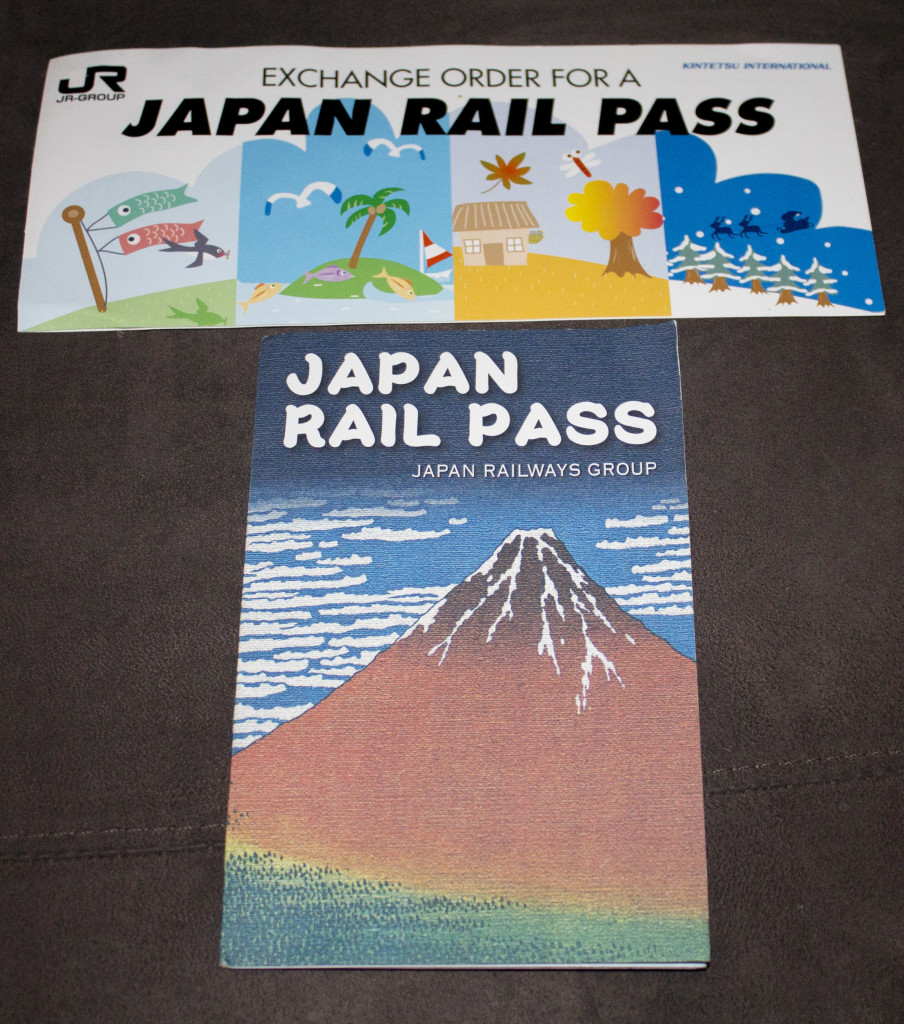Japan is known for its incredible rail system. Thanks to the country’s Shinkansen, you can get from Tokyo to Kyoto in a little over two and a half hours. This journey would take about five and a half hours by car. The country offers tourists a chance of a discount but it can be hard to know if getting a JR Pass will be worth it.
The Japan Rail pass can be incredibly cost saving depending on your itinerary within the chosen pass days. Below I detail whether it paid off for our trip.
About the JR Pass
- The Japan Rail Pass is available to purchase in the options of 7 days, 14 days and 21 days and either ordinary or green class (first class).
- To be eligible you must be a foreign tourist in the country as a temporary visitor.
- It can not be purchased in Japan, you need to organise it before arriving.
- Once purchased, you will receive a voucher that needs to be exchanged for the actual pass in Japan.
- The voucher must be exchanged within 3 months.
- When exchanging the voucher you can select any start date within a one month period. The starting date cannot be changed.
- Can be used on almost all JR run trains including Shinkansen, express, limited express, rapid and local trains.
- Some train rides run on only part JR lines so will require payment for the non-JR section.
- Can not be used on Nozomi or Mizuho trains.
- JR Pass holders can make seat reservations for free.
Using the Japan Rail Pass
If you don’t reserve seats the JR Pass will be your only ticket. You cannot use the automatic ticket gates instead, you need to pass through the manned gate to the side. You simply walk through and show your pass, the person will check the date printed on the back.
To make seat reservations show your Japan Rail pass at a JR ticket counter. You will need to let the person know what station you will be departing from, your destination station, date and time of departure and train name. You will also need to choose smoking or non-smoking. We only made seat reservations for longer distance journeys.
The screens at the ticket counter show the next trains leaving and the seating availability. When leaving from the station we were in and on that day, we simply pointed and said the train number. The person behind the counter confirmed the seats with us. When reserving seats from Shinagawa Station to Shin-Osaka Station, the first train we selected only had single seats left and they were separated. The lady at the ticket counter showed us where the available seats were situated and then told us if we waited for the train after that one, she would be able to reserve us a row of three seats together. We chose to wait for the later train.
Was the JR Pass worth it?
As we were flying in and out of Narita Airport, we would be travelling away from Tokyo and then needing to return for our flight home. A 7 day JR pass is about the same price of a return trip from Tokyo to Osaka or Kyoto. We decided to head straight to Osaka, travel around and then return to Tokyo within 7 days. We were travelling to both Himeji and Hiroshima and the Shinkansen is a much faster journey. As we wanted to visit these places, making a 7 day JR Pass work would be the most cost-efficient way of travelling around Japan.
At the time of writing, the cost of a 7 day JR pass, taken from traveljapan.com.au, is au$315 (¥28,665). I used Hyperdia to get the costing for the train journeys that were covered by our JR pass, these prices are for non-reserved seats, except for the Narita express where reservations are required. Reserved seats cost extra but can be made for free with a JR pass. When searching on hyperdia you can un-check the options for private railway and Nozomi/Mizuho/Hayabusa and this will then show you results for JR trains only if available.
Narita Airport to Shin-Osaka Station (via Shinagawa stn): ¥16,180
Shin-Osaka station to Himeji station: ¥3,740
Himeji station to Hiroshima station: ¥7,770
Hiroshima to Miyajima (train and ferry): ¥1,180 return
Hiroshima station to Shin-Osaka station: ¥9,710
Shin-Osaka Station to Nagoya station: ¥5,830
Nagoya station to Shizuoka station: ¥5,830
Shizuoka station to Yoyogi station (via Shinagawa stn): ¥5,830
Yoyogi station to Kamakura stn ( via Shinagawa stn): ¥1,840 return
Total travel costs = ¥57,910 (au$632).
That means the JR pass saved us a total of ¥29,245 (au$319) each.
Getting to all the places within 7 days was probably too rushed. In terms of cost efficiency, you can see the 7 day JR Pass was worth it.


